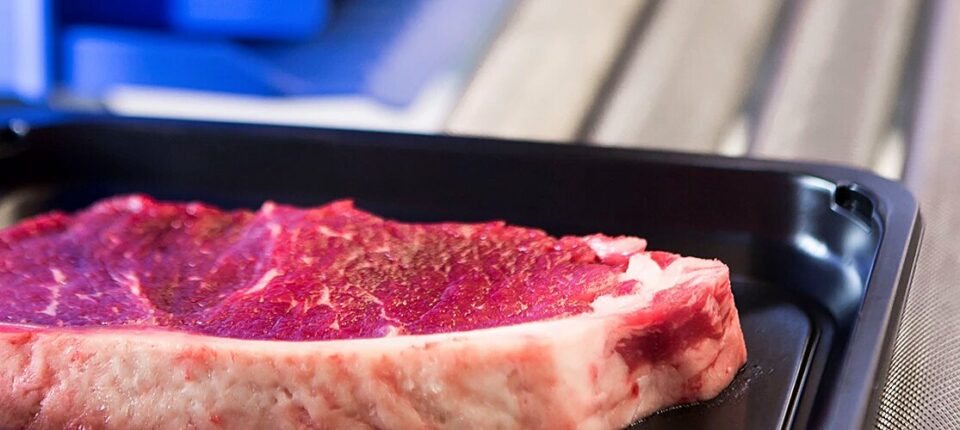As current trends move toward thinner and more varied portions, full primal utilization, and process automation, discover how our portion cutters can help you meet these market demands.
Trend 1: The market demands more and more thin portions
There are good reasons to invest in a portion cutting solution that’s able to meet with increasing demand for thinner and thinner portions. Thin portions are the base for trendy meals in many countries, such as French paillard in France, Japanese shabu-shabu, Italian saltimbocca, piccata Milanese and involtini, Austrian Wiener and Figlmüller Schnitzel, and German Rinderroulade.
As the global population grows, we are also seeing that we don’t have enough livestock for so many people. As feeding the world in the future will be a challenge, reducing food waste becomes more and more important. We need to make better use of what we have, and smaller portions have the advantage of reducing waste on the consumer’s end.
Our approach:
- Thin portion cutting can be one of the solutions to meet this trend. But to get a good cutting result with precise weights and portion shapes, crust-freezing is often necessary. Doing away with the need for crust-freezing can save you investments between €50,000 and €100,000, plus running costs.
Would you like to learn more about the future of thin portion cutting? Talk to our cutting specialists!
Trend 2: Don’t lose yield and turnover: You need to make the very best use of your primals!
Meat producers can’t afford to waste raw material, which is becoming ever more expensive due to various global factors. Among these factors are fast-growing populous nations buying up a large share of protein resources, African swine fever, avian flew and other diseases, which threaten numbers. Additionally, greater animal welfare awareness is making raising livestock more and more expensive.
With these increasing pressures, why be satisfied with 90% yield when you can get 99%? Do not downgrade your precious meat cuts to ground meat, sausage or even pet food just because your current portion cutting solution is not able to make full use of your raw material and creates too much giveaway and waste.
Our approach:
- Intelligent Marel portion cutters calculate the precise position where the knife must cut to get the best yield out of each primal. This means that every single cut can go into your tray and does not need to be downgraded. A premium steak obtains a better price than ground meat, sausages or pet food.
- Smaller trays in Supermarkets create a demand for controlling portion size. Volumetric portion cutting with pre-forming helps you save space in your tray. This means less packaging material and reduced packaging waste!
- Marel portion cutting solutions do not stop at the outfeed belt, but can also be combined with a CompactGrader, creating batches all having precisely the same total weight, reducing give-away almost to zero.
Trend 3: Automation keeps your processes running even when labor is down
Labor can be a limiting factor to the growth of your portion cutting department as there are still a lot of manual steps, such as portion singulation, putting together batches and loading portions into trays and boxes. These tasks need a lot of people to prepare portions for packaging and further processing. You may need two to three workers to put together portion batches from 1 ton of meat per hour!
Moreover, the pandemic has shown that production can be in considerable danger when people suddenly drop out because of sickness or quarantine, or you need to invest in health and contamination protection measures. In some regions, it’s even difficult to find staff.
To improve working conditions, factories are automating more and more trivial tasks and assigning ‘valuable’ employees to demanding activities that only humans can perform.
In addition to reducing the need for labor, increased automation means that human hands touch product less, meaning fewer sources of contamination.
Our approach:
- Our scalable solutions from A to Z help you automate any kind of fresh meat portion cutting process, not only for industrial processors, but also for medium-sized butcheries with high portioning volumes.
- We can help you improve not only your cutting technology, but also value-adding follow-up processes, e.g. sorting and batching, flattening, coating, tray loading and packaging, etc.



